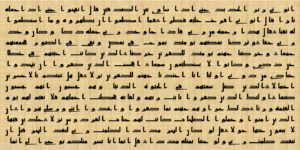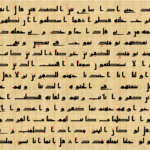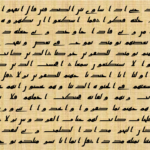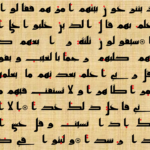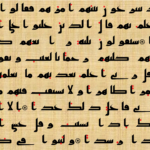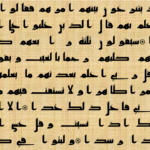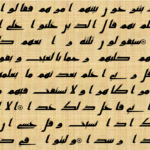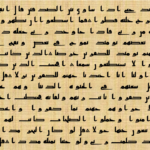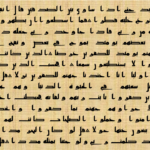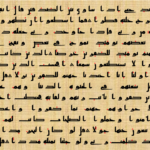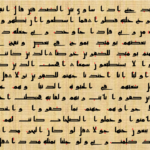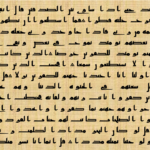The Mashq font family by Arabetics includes three styles of Mashq. The first is Mashq regular, which closely follows the script style of Musḥaf ‘Uthman (Topkapi Museum) with only the initial and final Haa’ baselines shifting. The second is Mashq Maail, which emphasizes the features of the Ma’il style shared with Mashq. The third is Mashq Kufi, which closely follows the script style in an adequate sample from the Quran manuscripts of the Bergstraesser Archive. All three fonts include two styles, with and without Tashkeel. The Mashq and Mashq Kufi fonts include two more styles, with and without Harakat, and Hamza. Only three soft vowels are implemented along with their Tanween forms. The Sukoon vowel is the default shape before inserting a soft vowel. Hamza was treated as a vowel in the Mashq and early Kufi manuscripts. Kashida is a zero width character. In the Mashq fonts, inserting one Kashida before the final ‘Ayn glyph group will trigger alternative shapes. In the Mashq Kufi fonts, inserting one Kashida (or two) before the final Yaa’, ‘Ayn, and Ḥaa’ glyph groups will trigger alternative shapes. The Mashq font family by Arabetics was designed to be as compatible as possible with the Arabic keyboard and Unicode alphabet used in computers today. Calligraphic variations were implemented only when they marked significant and permanent script features.
Mashq is available through Arabetics , MyFonts , and other font vendors. Discounted educational pricing may apply. Additionally, if you buy “A Handbook of Early Arabic Kufic Script: Reading, Writing, Calligraphy, Typography, Monograms” you acquire a license for the private, personal, non-commercial use of the font family. Please send an email to contac@arabetics.com with a receipt of book purchase. The font file will then be sent to you as an attachment with an Arabetics reply to your email.
